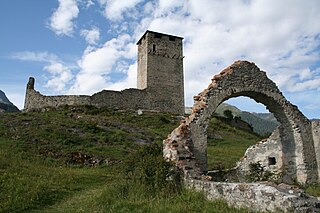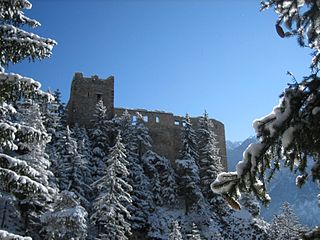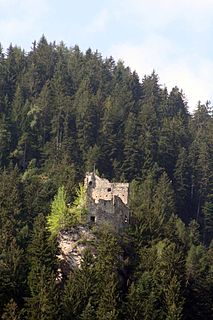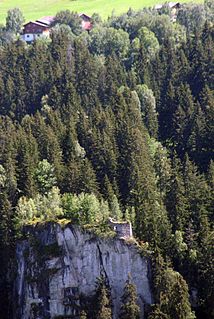| Spaniola Castle | |
|---|---|
| Tuor | |
| Pontresina | |
Ruins of Spaniola | |
| Coordinates | 46°29′21.46″N9°54′35.50″E / 46.4892944°N 9.9098611°E Coordinates: 46°29′21.46″N9°54′35.50″E / 46.4892944°N 9.9098611°E |
| Type | hill castle |
| Code | CH-GR |
| Height | 1,878 m above the sea |
| Site information | |
| Condition | ruin |
| Site history | |
| Built | around 1200 |
Spaniola Castle is a ruined castle in the municipality of Pontresina of the Canton of Graubünden in Switzerland.
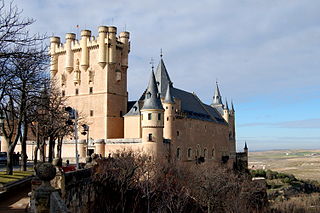
A castle is a type of fortified structure built during the Middle Ages by predominantly the nobility or royalty and by military orders. Scholars debate the scope of the word castle, but usually consider it to be the private fortified residence of a lord or noble. This is distinct from a palace, which is not fortified; from a fortress, which was not always a residence for royalty or nobility; and from a fortified settlement, which was a public defence – though there are many similarities among these types of construction. Usage of the term has varied over time and has been applied to structures as diverse as hill forts and country houses. Over the approximately 900 years that castles were built, they took on a great many forms with many different features, although some, such as curtain walls and arrowslits, were commonplace.

Municipalities are the lowest level of administrative division in Switzerland. Each municipality is part of one of the Swiss cantons, which form the Swiss Confederation. In most cantons municipalities are also part of districts or other sub-cantonal administrative divisions.

Pontresina is a municipality in the Maloja Region in the canton of Graubünden in Switzerland.













